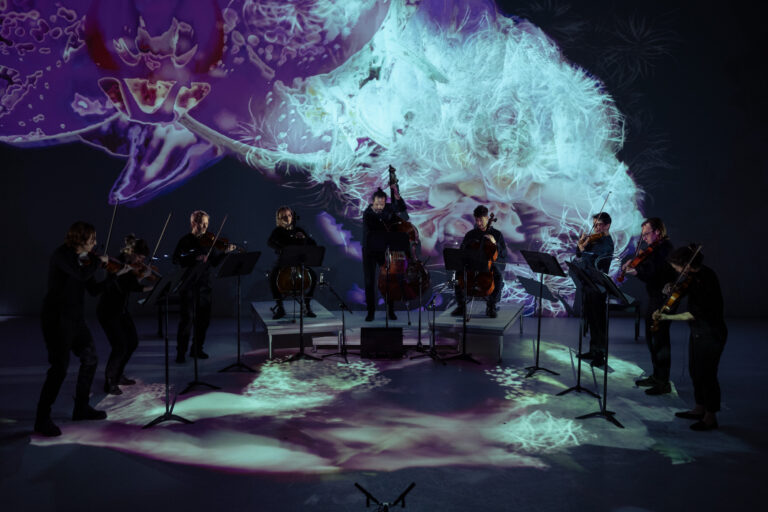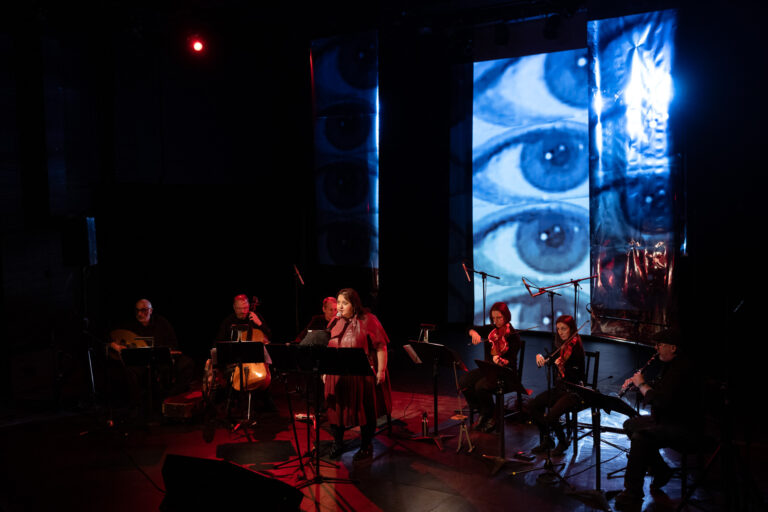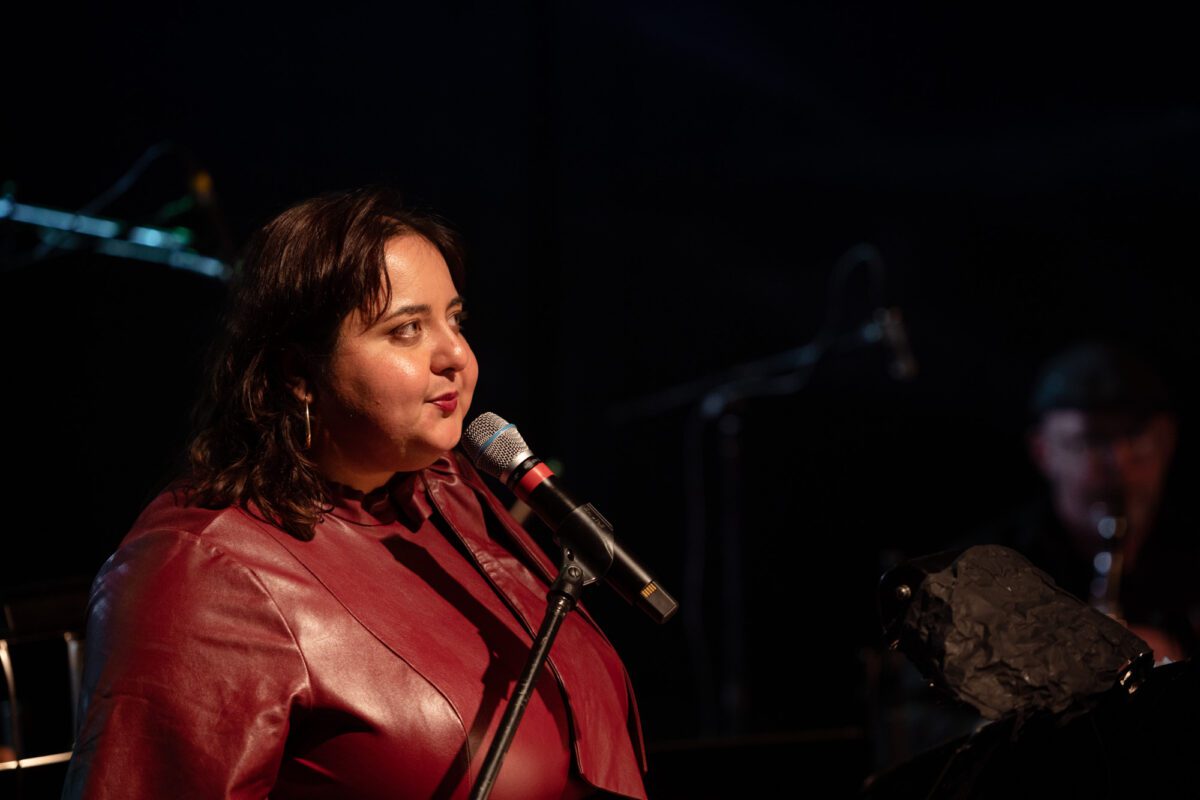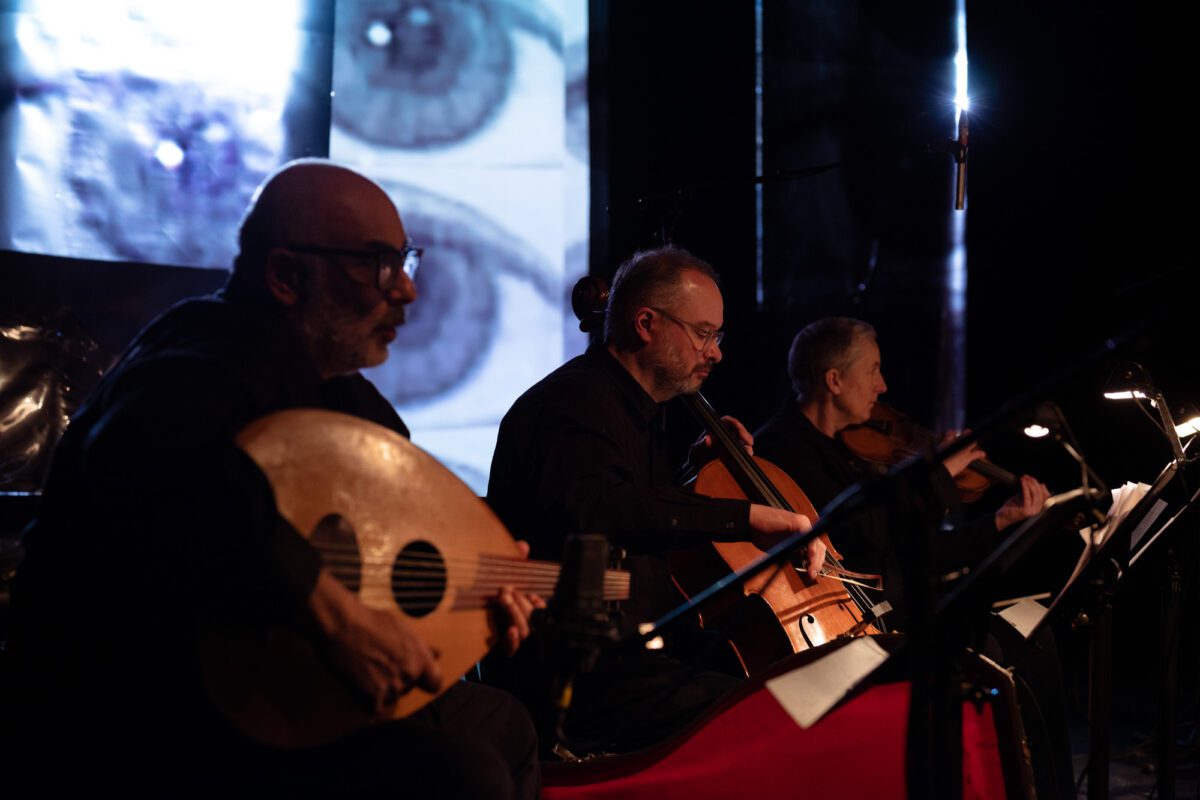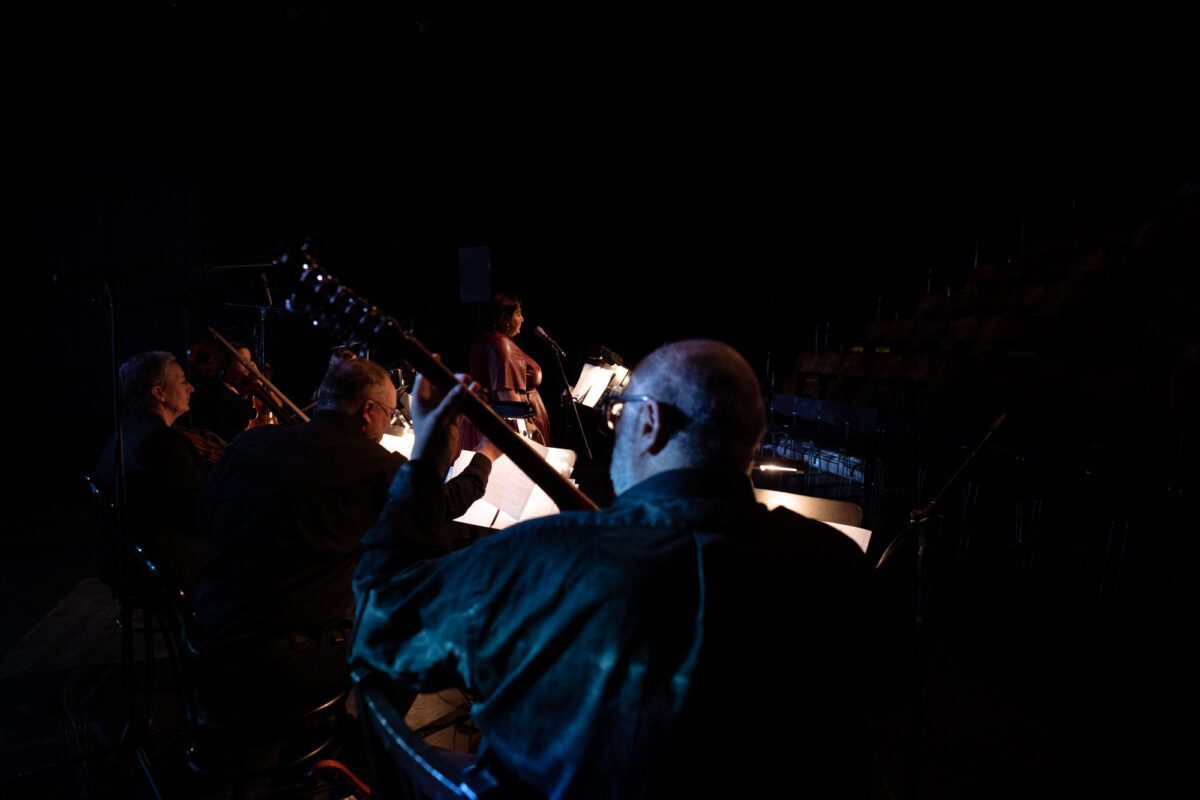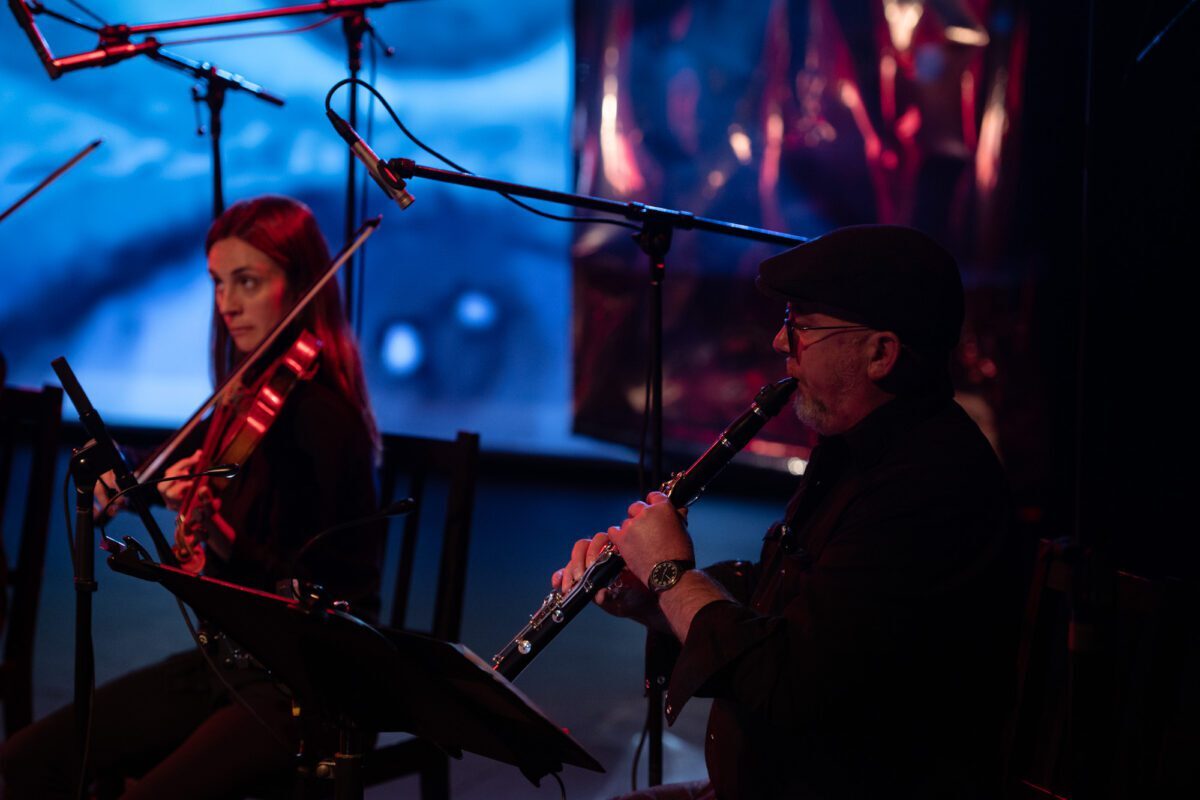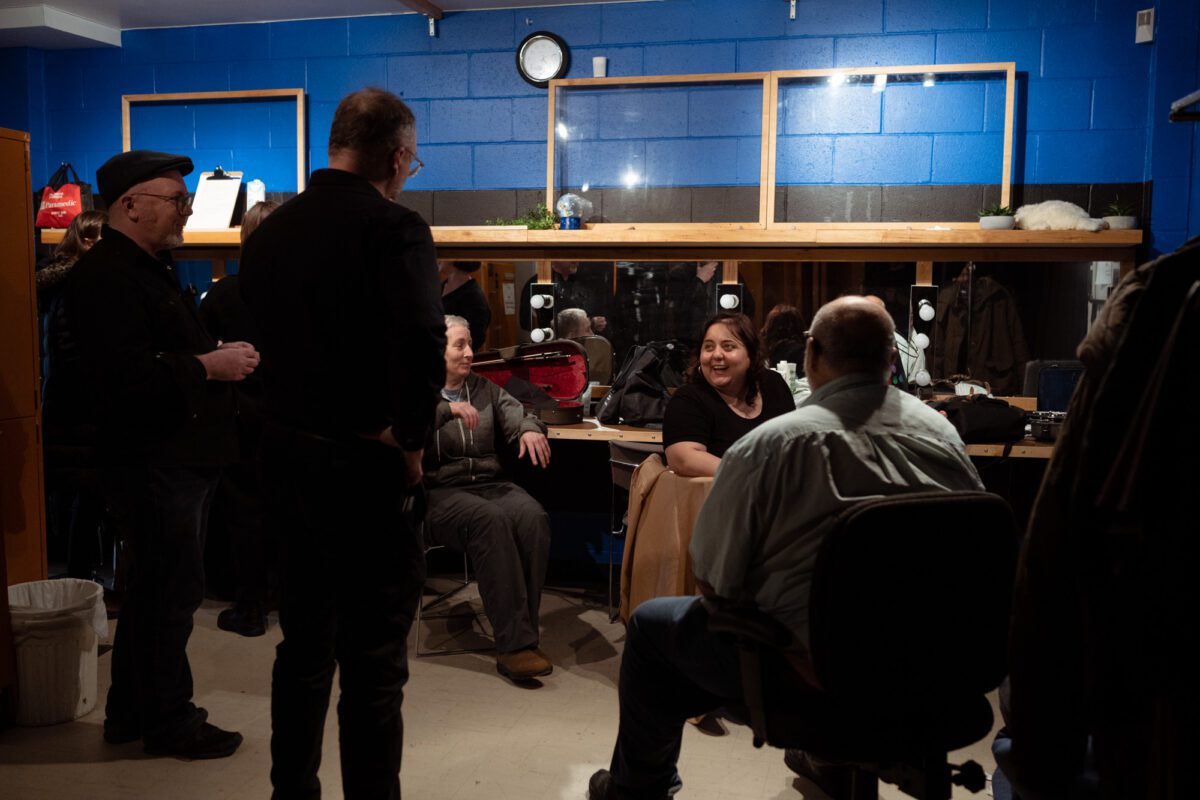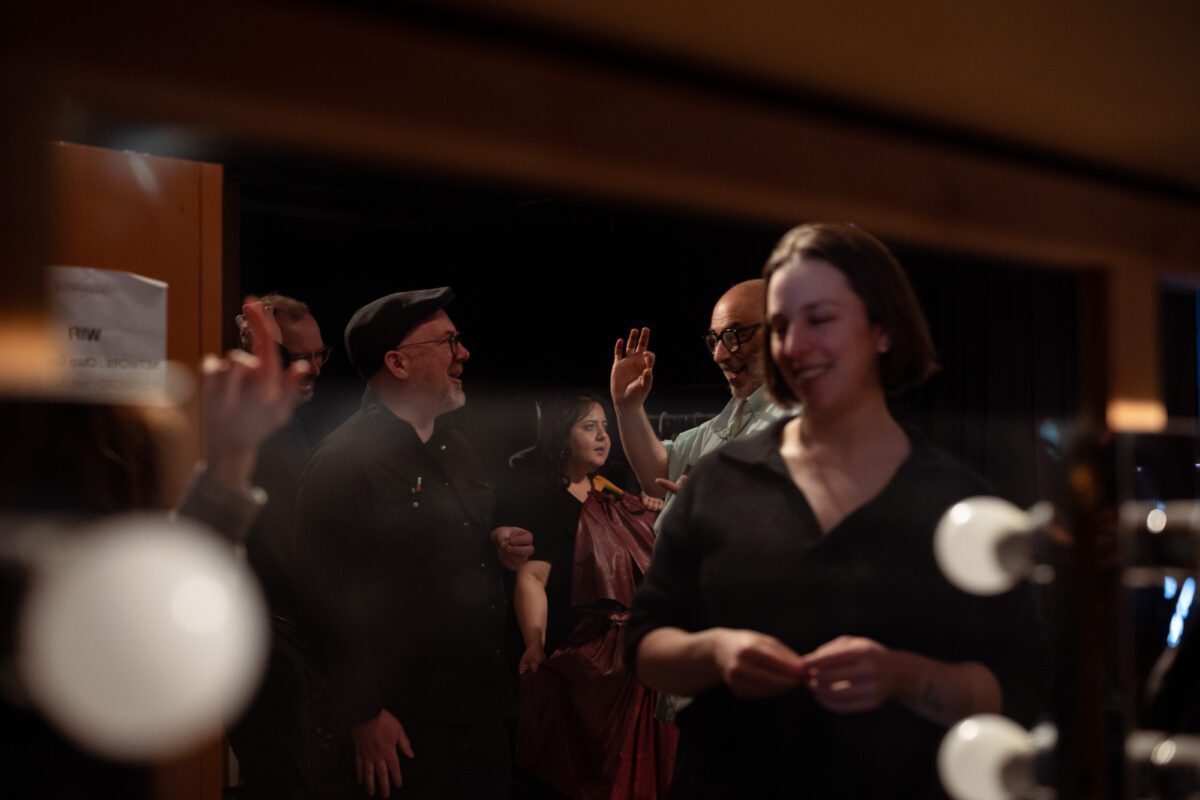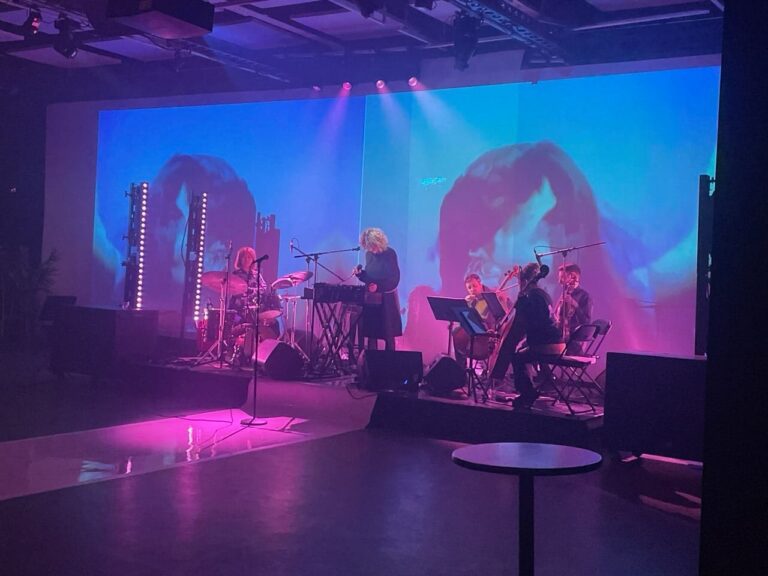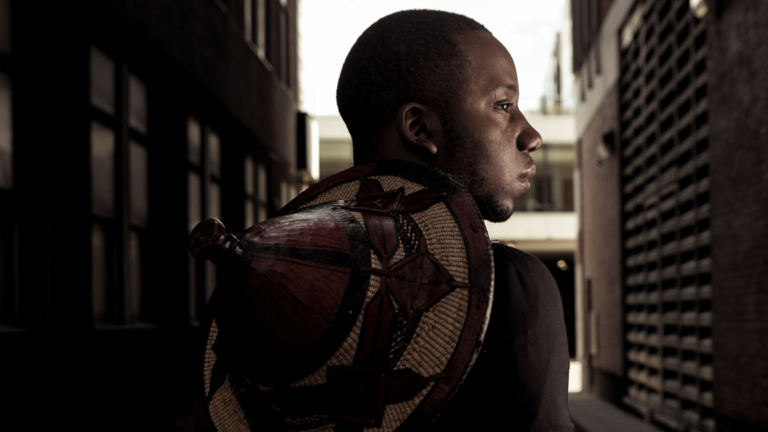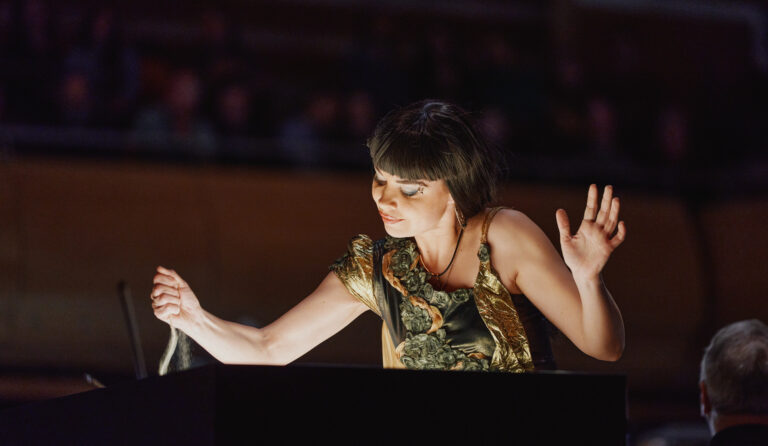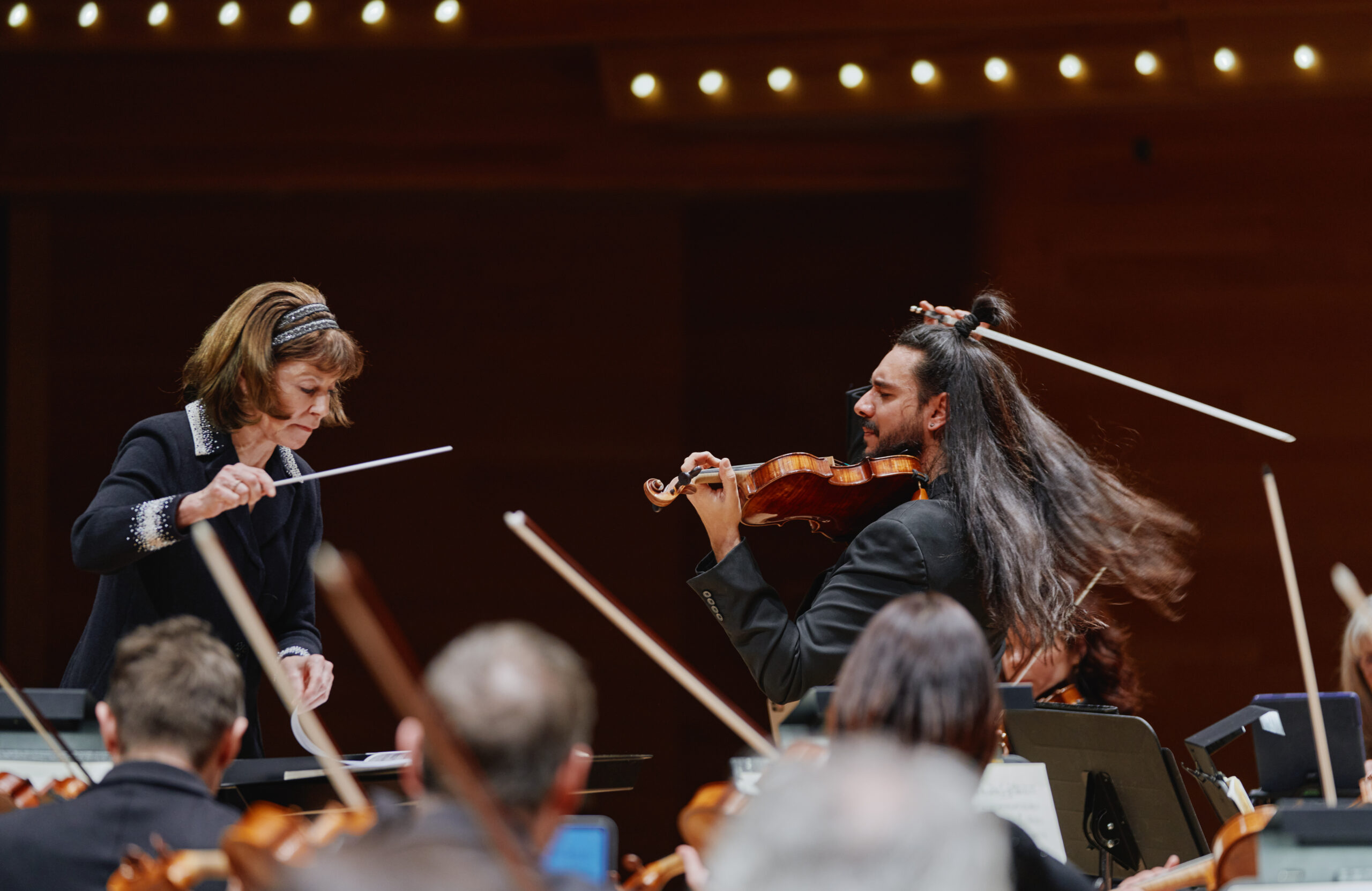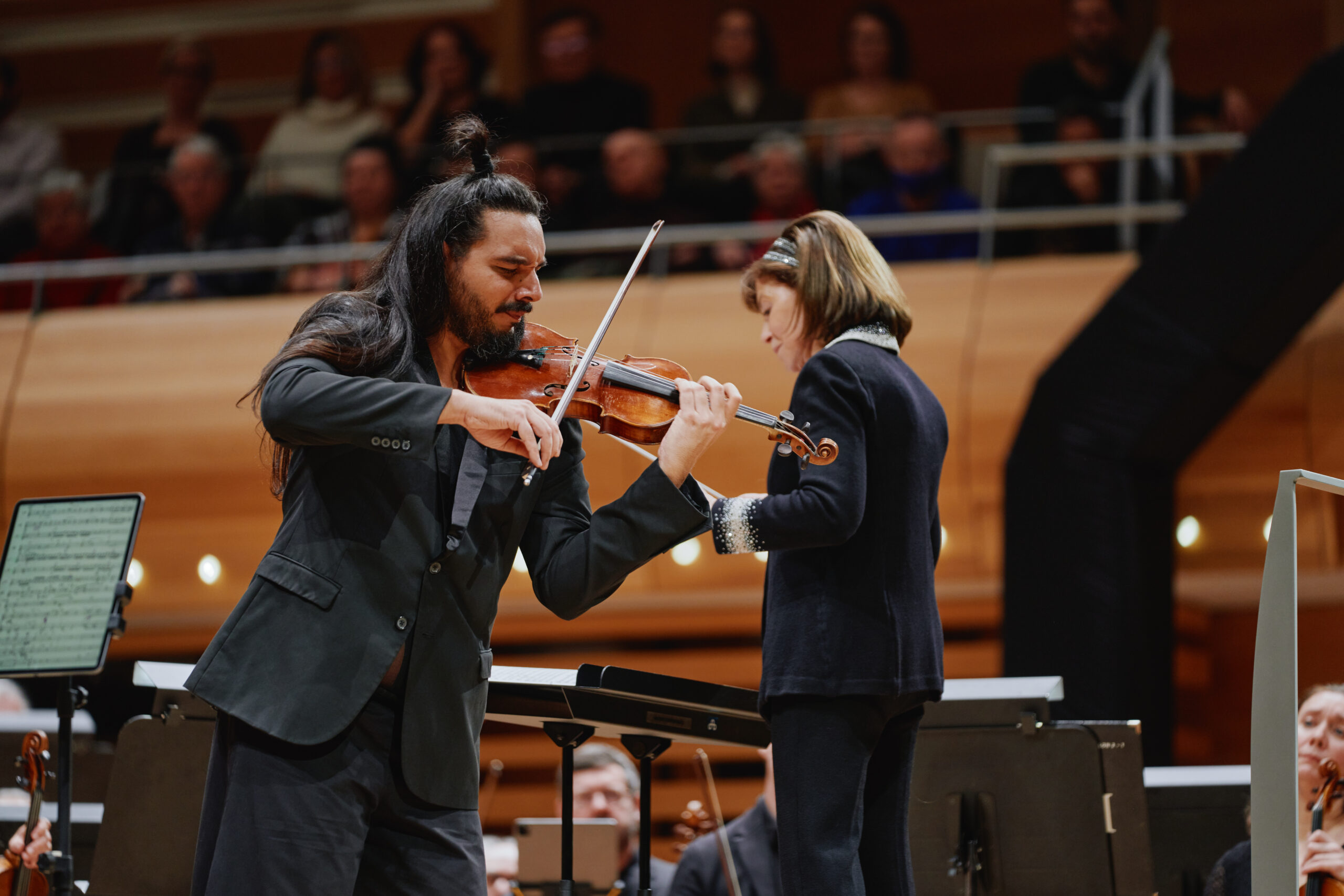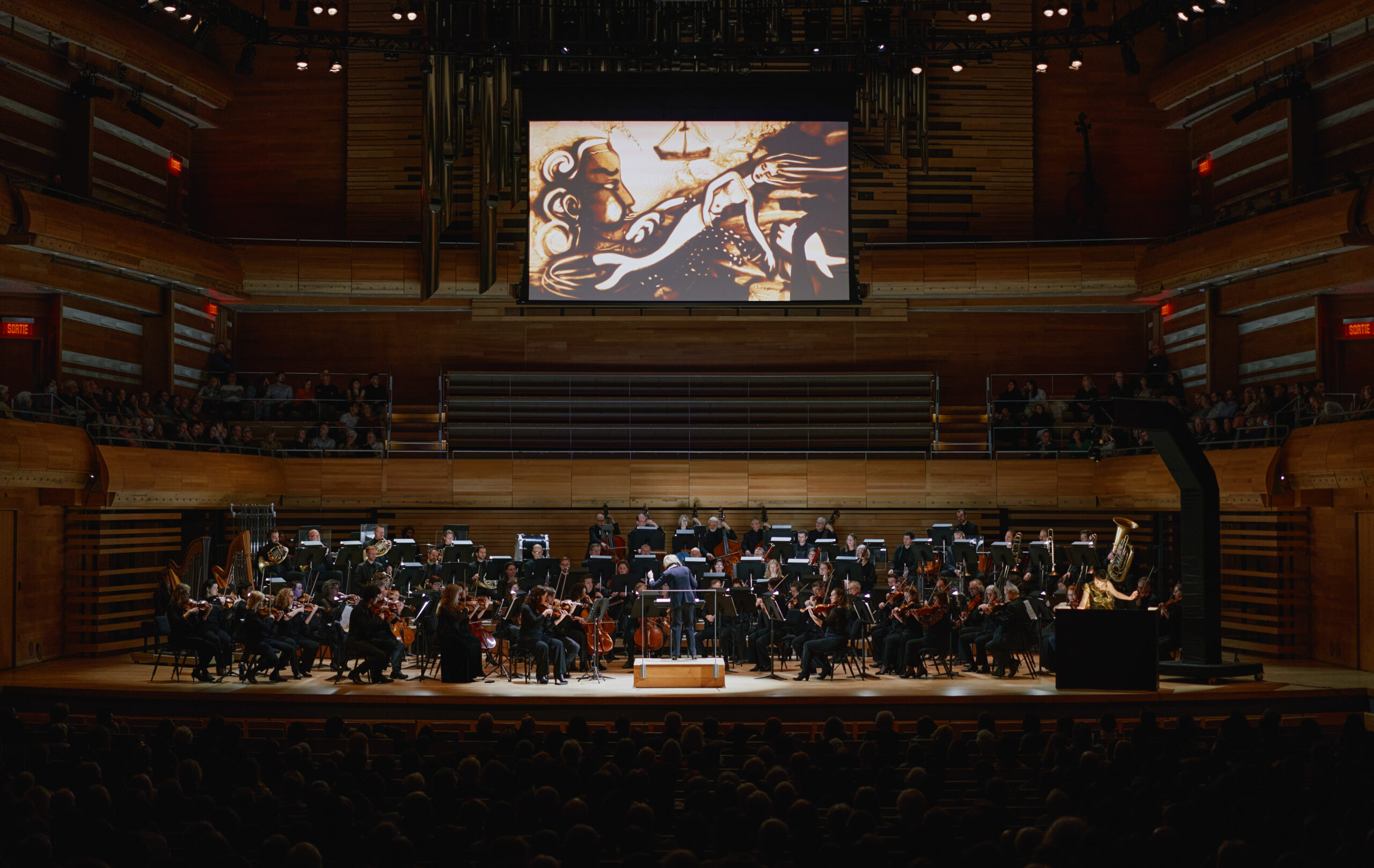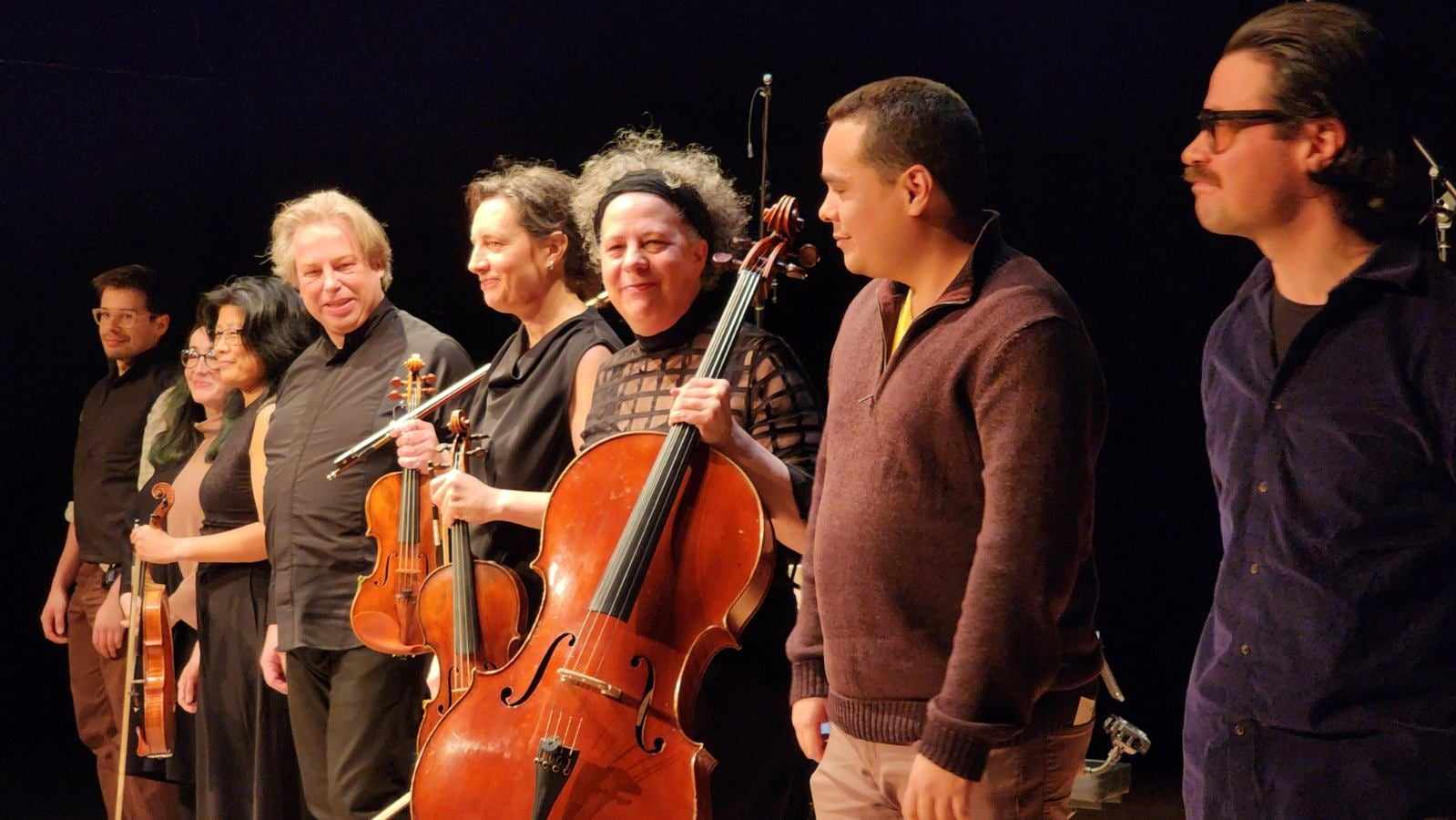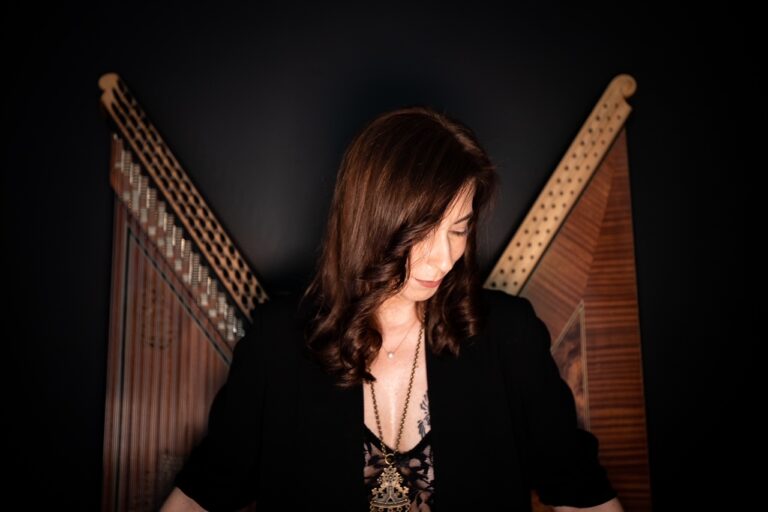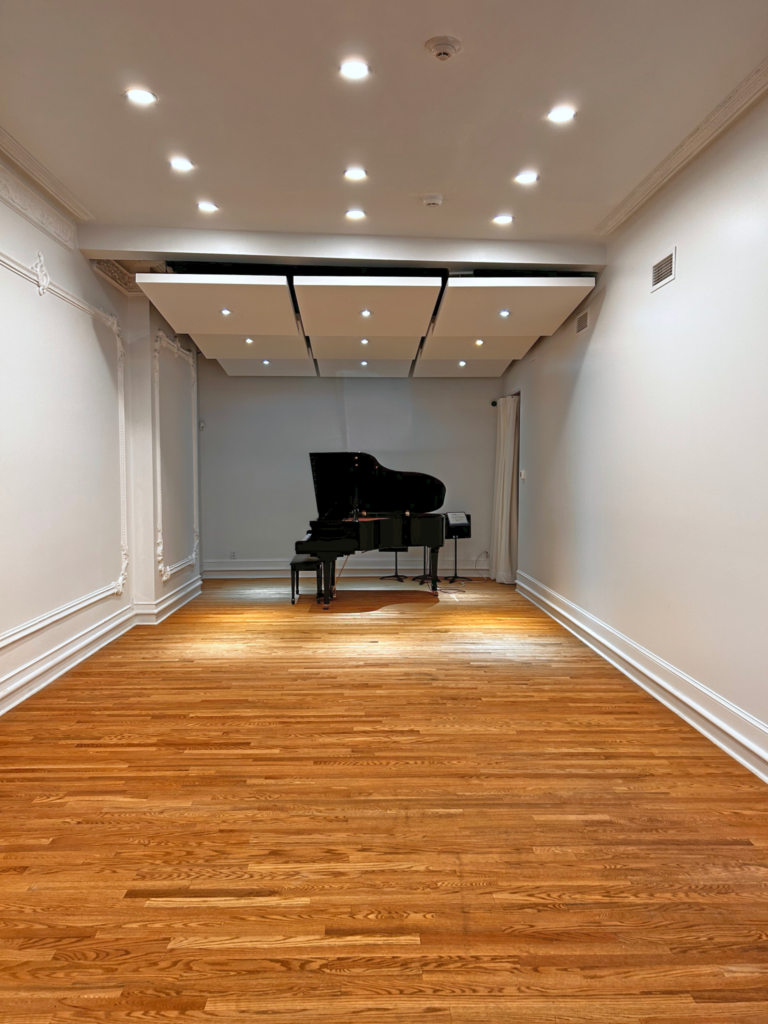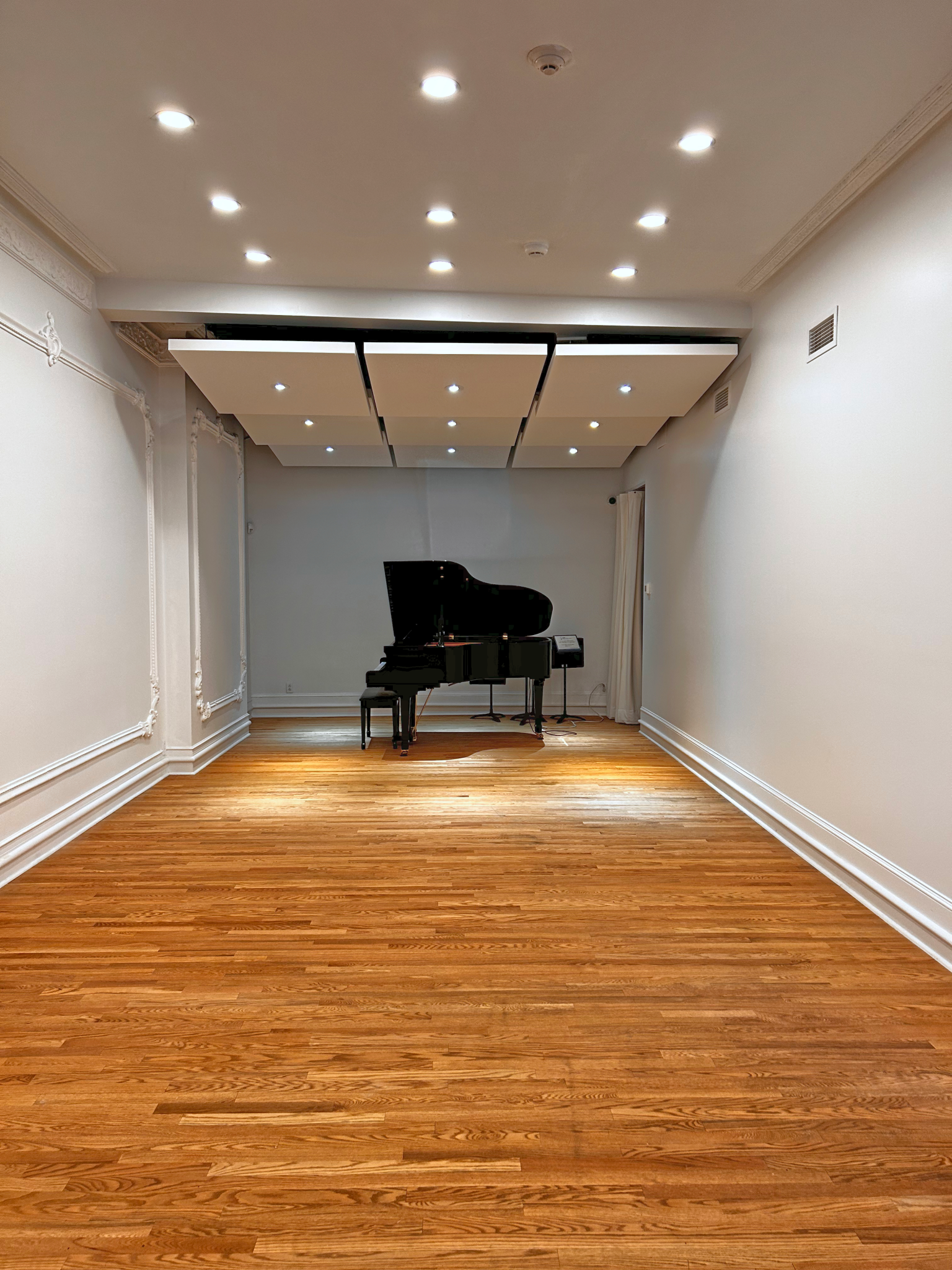On Friday 15 March, collectif9, supported by two composers/videographers (Myriam Boucher and Pierre-Luc Lecours), gave the North American premiere of Héros, a work first performed in France in 2020, but which has never been able to travel since because of the pandemic crisis. It was a sort of second Première for this five-movement piece, written for the ensemble’s nine instrumentalists (4 violins, 2 violas, 2 cellos and 1 double bass) and two live video artists.
Thibault Bertin-Maghit, founder and general/artistic director of collectif9, explains the process of musical creation in the interview he gave me, which I encourage you to listen to here:
I’ll just give you a brief summary: starting with Beethoven’s music (2020 was the 250th anniversary of his birth), Boucher and Lecours, who are used to working with electronics, wove a digital musical framework in which Beethoven becomes difficult to recognise, which they then transcribed for the Montreal acoustic ensemble!
From acoustic to digital and back to acoustic again, the rather original approach promised some surprising moments. In truth, this was not the case, which is not to say that it was not good. It’s just that I was expecting some technically virtuosic instrumental passages, spectacularly drawn with millimetric pointillism. I was imagining something perhaps experimental.
Instead, Héros is draped in the hyper-seductive garb of repetitive American minimalism. The five movements develop in slow-fast-slow-fast alternation with a mixed finale. The overall effect is far more ‘pleasant’ than the original premise suggests, and results in a product whose ‘exportable’ potential for touring outside the usual circles of creative music is very interesting.
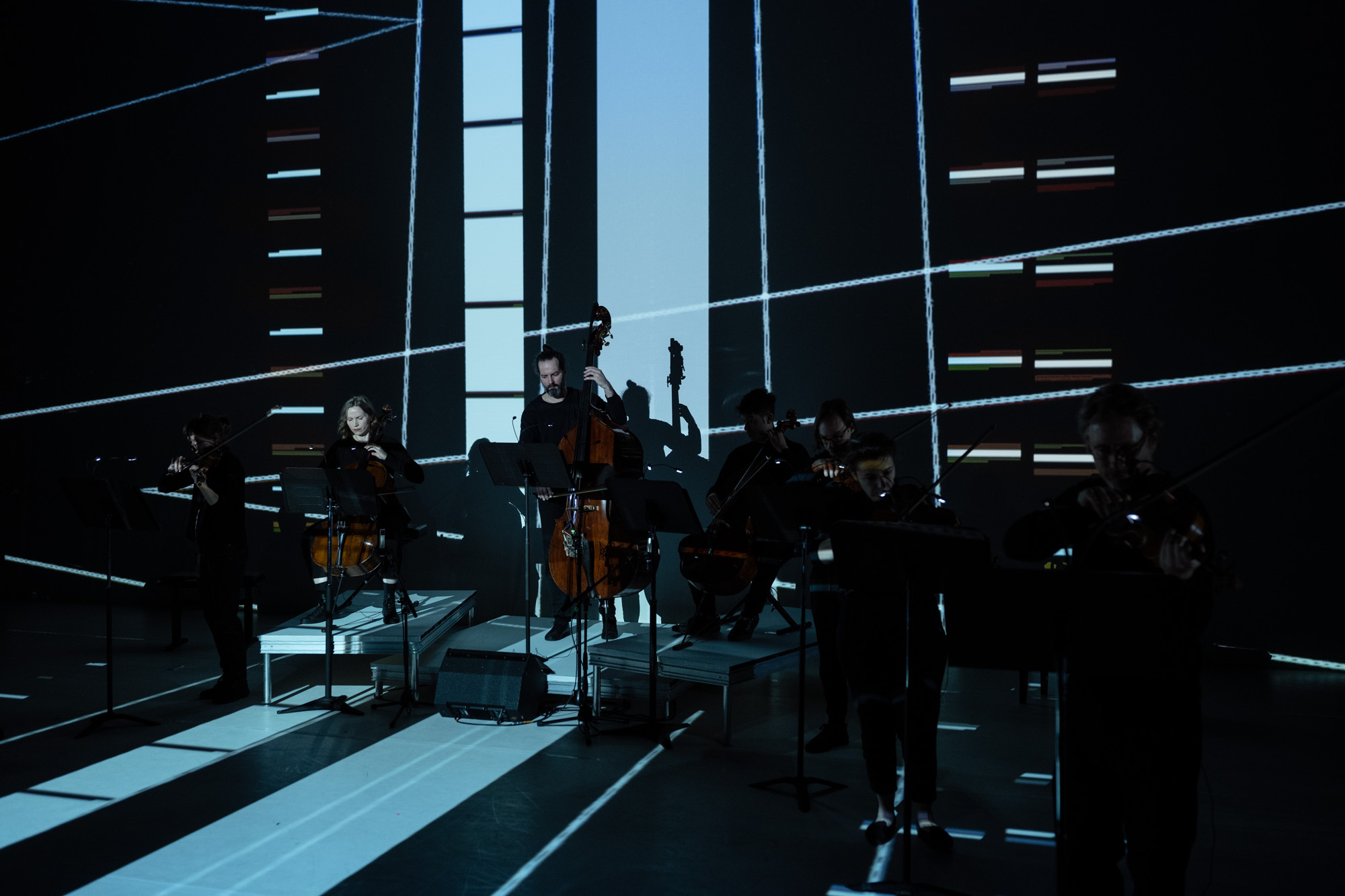
collectif9
cr.: Philippe Latour
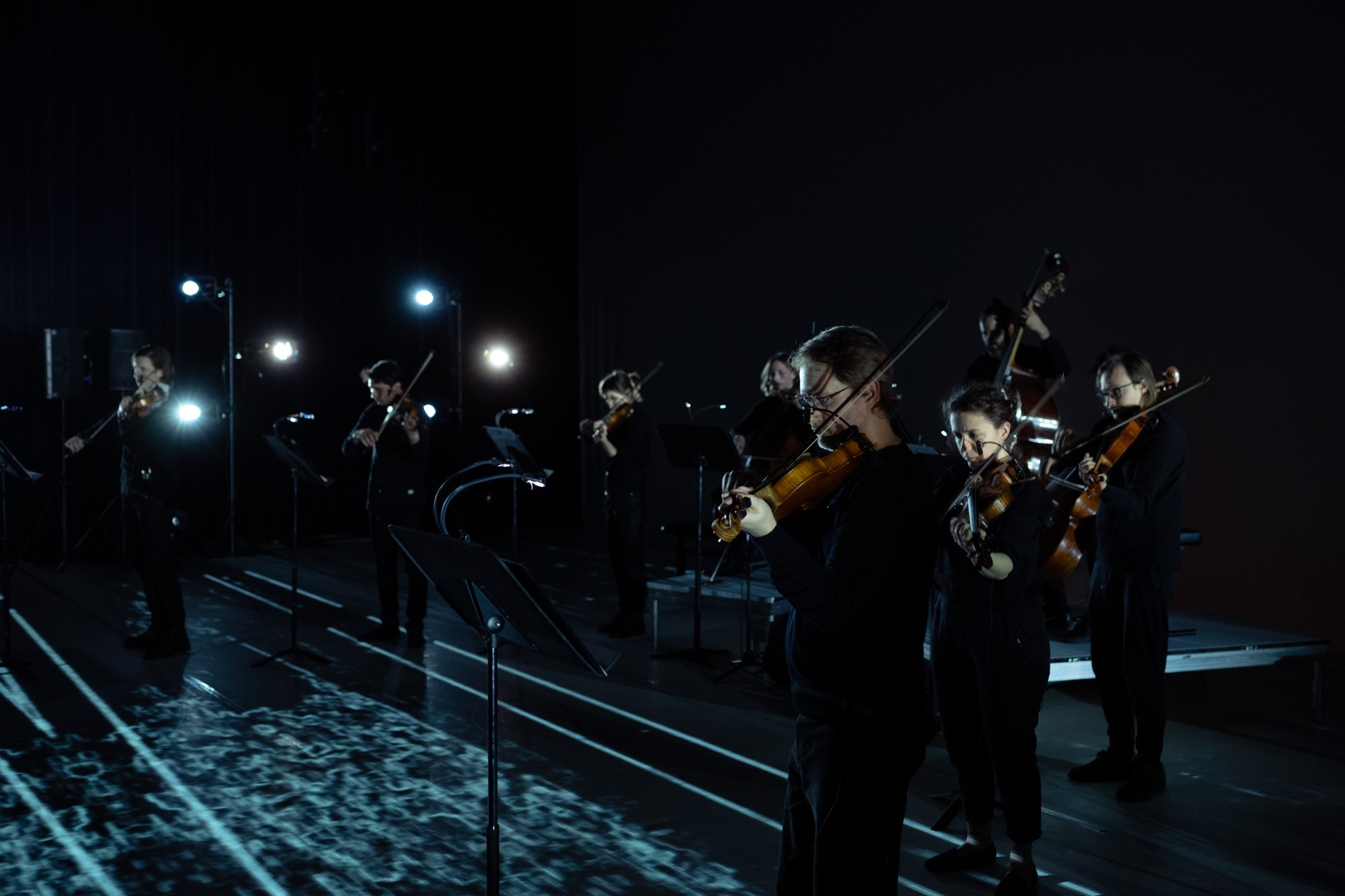
collectif9
cr.: Philippe Latour
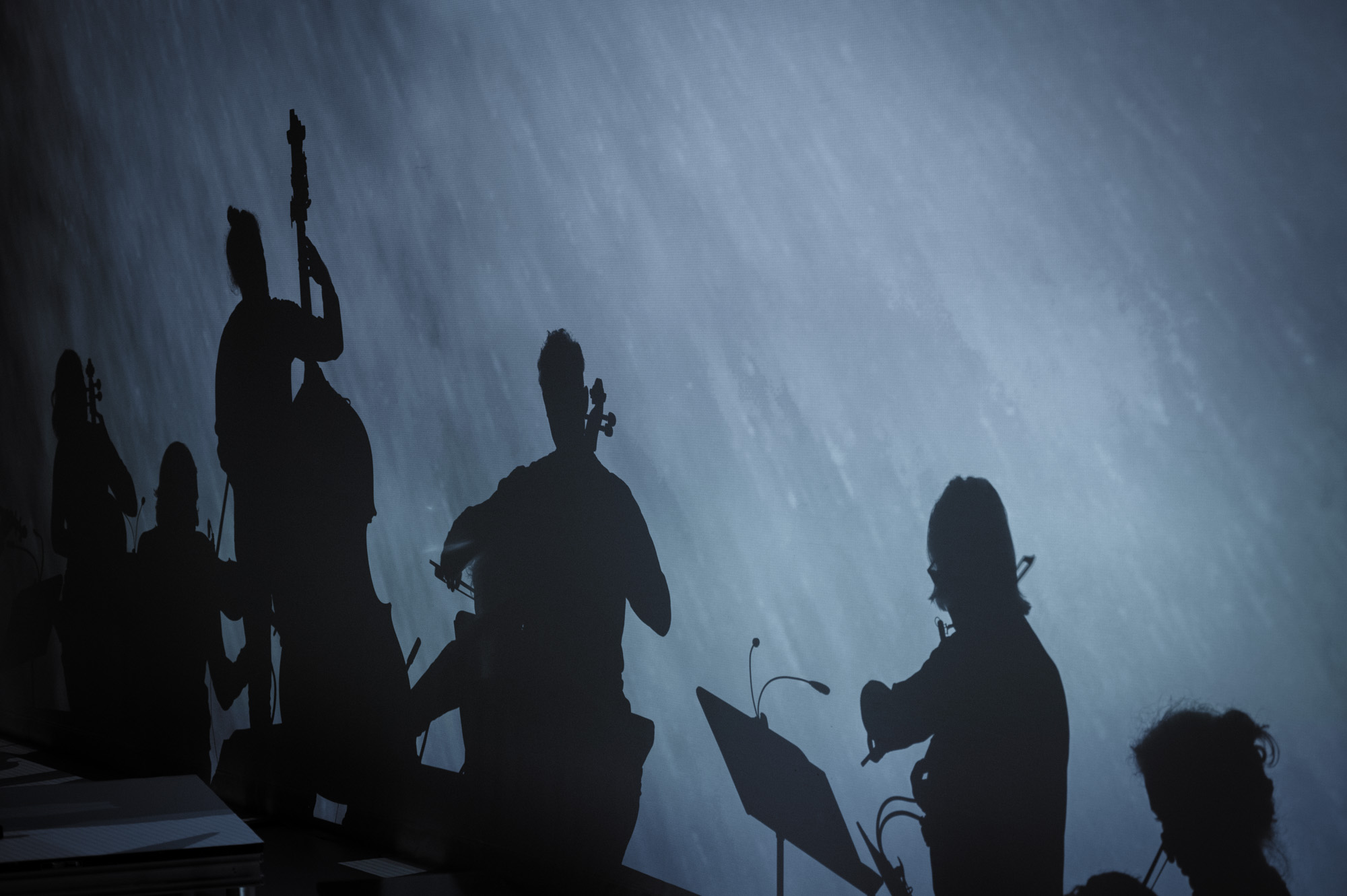
collectif9
cr.: Philippe Latour
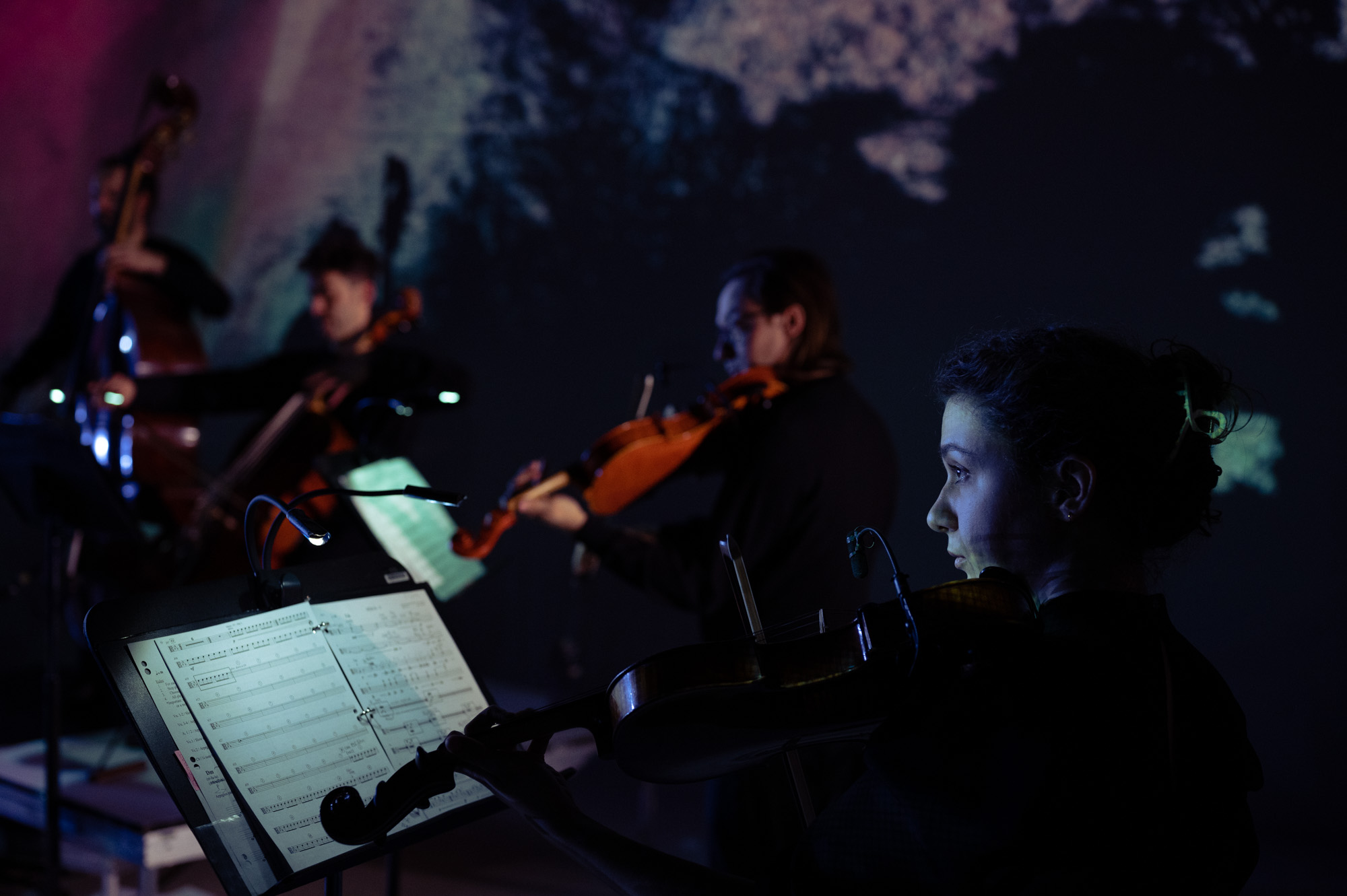
collectif9
cr.: Philippe Latour
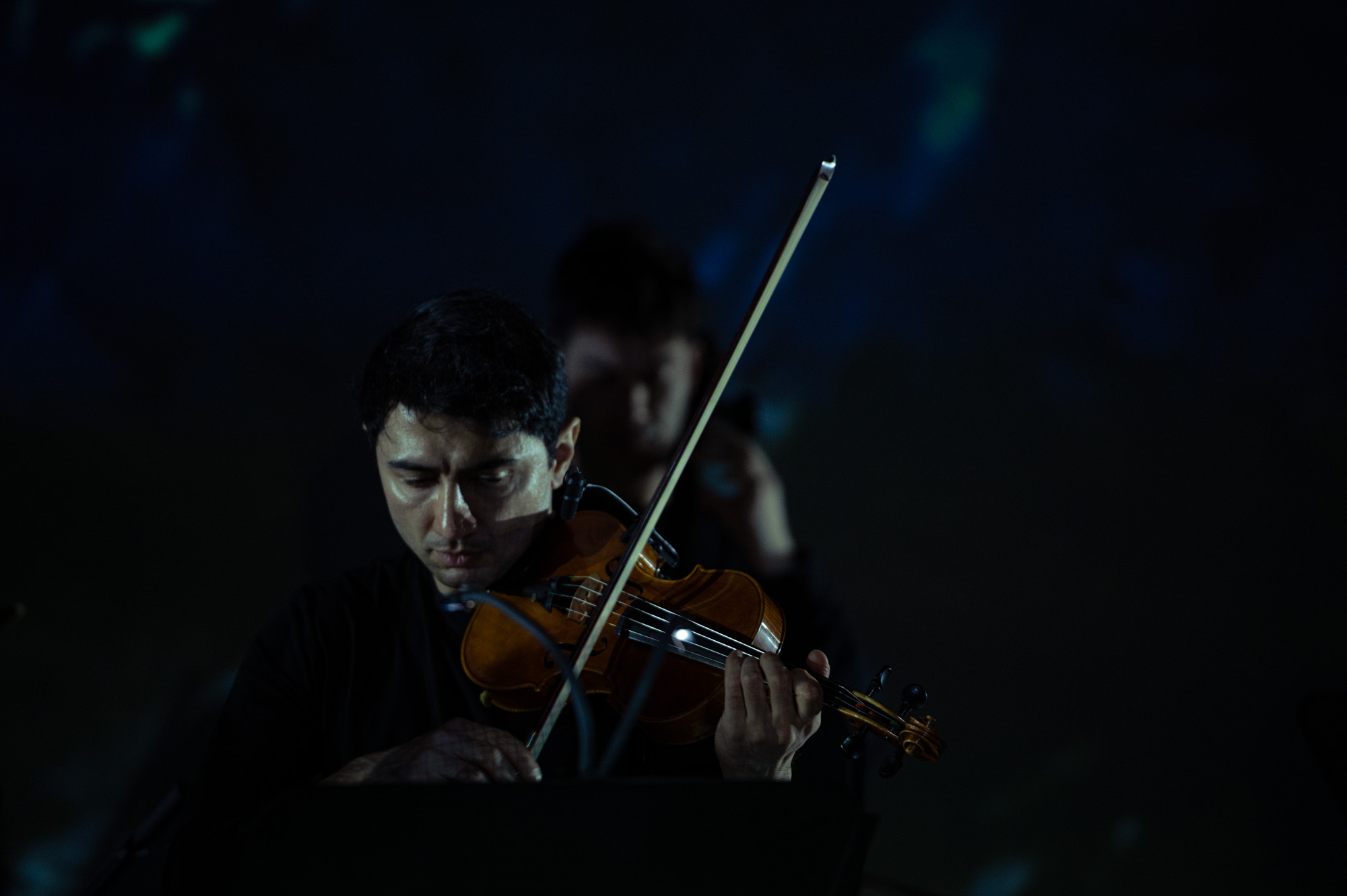
collectif9
cr.: Philippe Latour
The video projections animated live by Boucher and Lecours move back and forth between abstraction and natural scenes (lots of birds) filtered by effects of transparency and chromatic color changes. Beethoven’s relationship with nature is probably what most reminds us of his presence in the background, as we search in vain for some melodic reference to the composer (apart from a few chords here and there). In any case, the interest lies not in finding familiar quotations, but rather in the sensory, audio-visual journey on offer.
I found the fourth movement to be the most exciting and absorbing. Against a backdrop of vertical stripes of varying widths and speeds, the highly rhythmic, even nervous music creates a hypnotic trance effect. Certain geometric bands appear in perfect synchronicity with the attacks of the instrumentalists. A fine example of live video creation truly integrated with a musical score.
The final movement offers an almost lyrical synthesis in its elegiac amplitude, touching and much appreciated by the audience.
The Espace Orange at the Wilder was filled to capacity, confirming another success for the Semaine du Neuf contemporary music festival.
As I mentioned, the export potential of Héros is undeniable. I can see this contemporary creation, which is by all accounts fairly user-friendly, being very well received throughout Quebec and elsewhere, in venues not used to the repertoire normally offered by Le Vivier contemporary music hub. Where Andréa Streliski and Jean-Michel Blais draw in the crowds, the Montreal ensemble should be able to pull its weight with Héros.
Another fine coup by collectif9.
